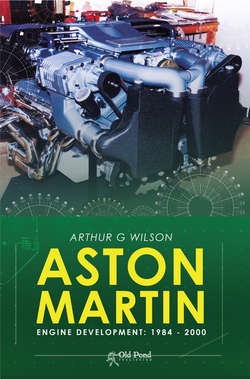Читать книгу Aston Martin Engine Development: 1984-2000 - Arthur Wilson L. - Страница 8
Author’s Preface
ОглавлениеWhen I first started to write these notes I was not sure what I would do with them or why I should write about the period of AML engine history that happened during my stewardship. But I had started at a time when so much of what had gone before appeared to be of little value and was being thrown away. I suppose that I just felt that with all of the changes that were occurring during the mid-nineties there was a strong possibility that an important part of our history would be lost forever or worse still, rewritten. I am by nature a shy person, much happier in a test bed or on a test track with a box of jets and E tubes rather than in any spotlight. I have been interviewed by journalists and authors on a number of occasions and I can only say that I sympathise with them – the term “blood out of a stone” springs to mind. So if I don’t actually write something down myself then my version of events will surely be lost. Therefore I am a slightly reluctant author and I fear not a very polished one – my first attempt and all that but here goes.
I have written about engine development at AML mainly during the period 1984 to 2000 but with some background reference to my time at AML leading up to that period. I write with the reasonably well-informed Aston Martin enthusiast in mind, sufficiently well informed to understand the effects of legislative constraints on motor manufacture as opposed to the relative freedom of aftermarket modification and racing. Naturally my comments in this book will mainly apply to the former. It is simply a book about engine development at AML.
One thing that became very obvious as I wrote was the pace at which technology progresses within the motor industry, particularly the components used to respond to environmental issues. When I started to write I was writing about the technical innovation of recent times but as time went on I was aware of being overtaken by the pace of change. Technical innovation is a very perishable subject to write about so the content in this book on that subject should be looked at with the early to mid-90s in mind. What may have seemed an almost insurmountable problem at that time and therefore a major achievement when resolved would perhaps now seem a minor inconvenience due to the advances made in component technology, particularly as regards catalytic converters and electronic engine management. Having said that, anyone who knows the business will appreciate that the 32 valve Vantage engine in particular did set new standards. It was the most powerful production car engine at the time of its release and the design philosophy behind the supercharged approach was appropriate for the challenges of the time.
